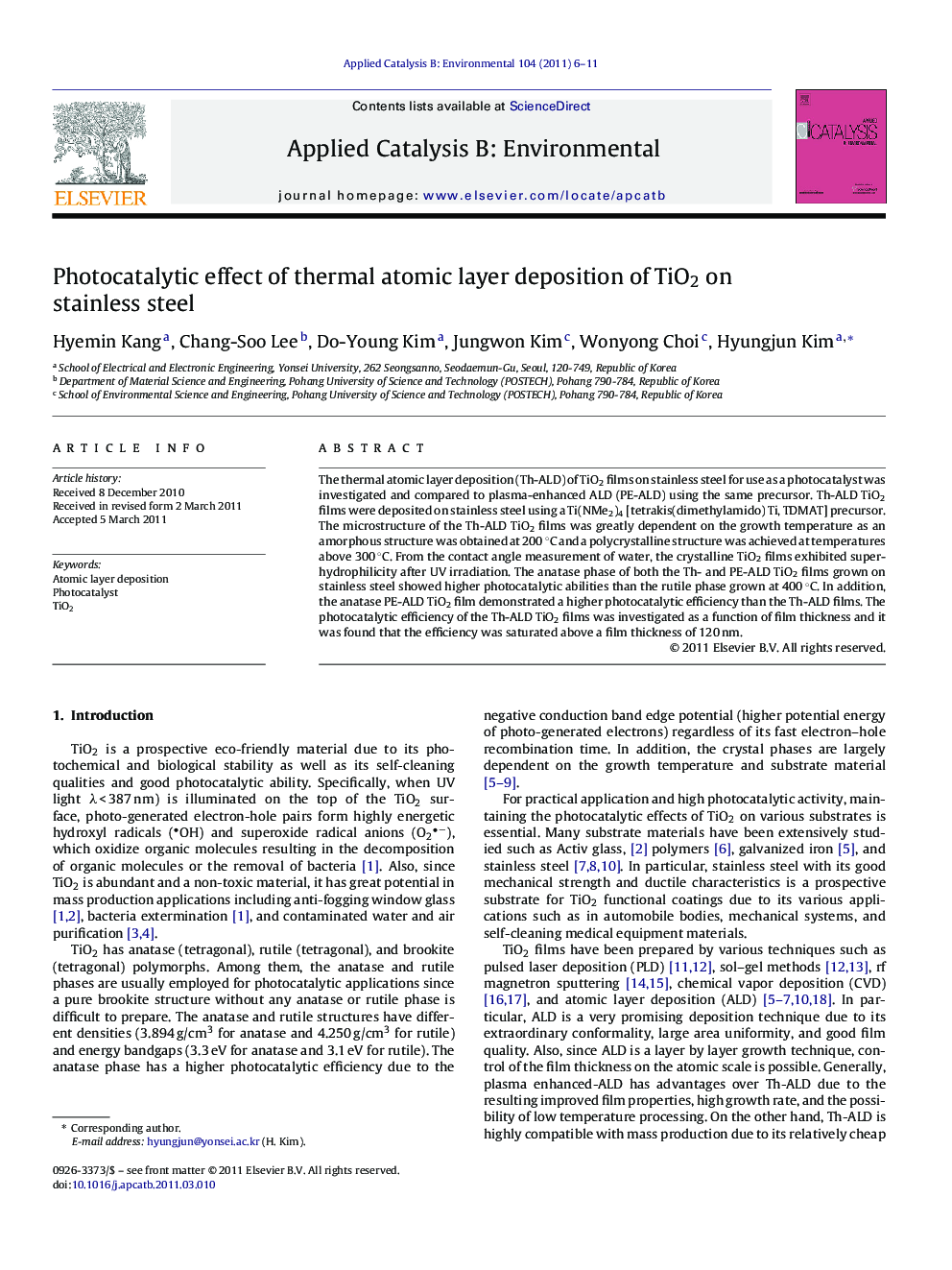| Article ID | Journal | Published Year | Pages | File Type |
|---|---|---|---|---|
| 46822 | Applied Catalysis B: Environmental | 2011 | 6 Pages |
The thermal atomic layer deposition (Th-ALD) of TiO2 films on stainless steel for use as a photocatalyst was investigated and compared to plasma-enhanced ALD (PE-ALD) using the same precursor. Th-ALD TiO2 films were deposited on stainless steel using a Ti(NMe2)4 [tetrakis(dimethylamido) Ti, TDMAT] precursor. The microstructure of the Th-ALD TiO2 films was greatly dependent on the growth temperature as an amorphous structure was obtained at 200 °C and a polycrystalline structure was achieved at temperatures above 300 °C. From the contact angle measurement of water, the crystalline TiO2 films exhibited super-hydrophilicity after UV irradiation. The anatase phase of both the Th- and PE-ALD TiO2 films grown on stainless steel showed higher photocatalytic abilities than the rutile phase grown at 400 °C. In addition, the anatase PE-ALD TiO2 film demonstrated a higher photocatalytic efficiency than the Th-ALD films. The photocatalytic efficiency of the Th-ALD TiO2 films was investigated as a function of film thickness and it was found that the efficiency was saturated above a film thickness of 120 nm.
Graphical abstract.Figure optionsDownload full-size imageDownload as PowerPoint slideHighlights► Preparation of thermal-ALD TiO2 films as a photocatalyst. ► Comparative study of chemical and photocatalyst ability on thermal-ALD and plasma enhanced ALD TiO2 films as a photocatalyst. ► Investigation of the difference and advantage of each ALD process.
